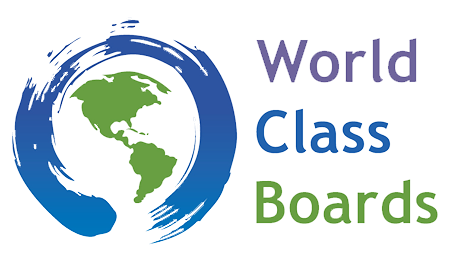Creating a Board Meeting Agenda
Creating a Board Meeting Agenda
An agenda is the nucleus of the meeting. A properly created agenda has the power to energize the meeting and provides direction and purpose. It serves to accomplish the objectives of the organization and to fulfill the mission. It manages the meeting.
The chair is responsible for creating the agenda. The agenda itself requires a vision, understanding of the organization and what must be accomplished, and consideration for all the board members and staff’s desires and demands. Here are several suggestions to follow:
- Solicit issues and ideas from other officers, directors and committee chairs, making certain that all items are appropriate concerns for the board level.
- Together with the staff, assemble the agenda.
- Make certain that items have been researched with supporting data, committee findings, options and recommendations made available. Only legitimate items go on the agenda. Nothing should be vague or unexplained.
- Be realistic. Make the agenda manageable. Don’t add more items than the meeting can reasonably consider. Some items may need to be held over.
- Consider an “approval of agenda” item at the beginning that allows the board to agree to the tasks with corresponding times for discussion. With all in agreement, members agreed to be “self-facilitators” by confining their discussions to relevant information. The time limit can be stretched but only if the entire group agrees.
- Consider the use of a consent agenda which eliminates the need to vote separately on many of the routine items and resolutions not requiring explanation or board discussion. All items for the consent agenda (e.g., such as signatory authority for banking and investment accounts, minor procedural changes, reports) are grouped together. There will be one motion to approve all items on the consent agenda, but it will take only the request of any one board member—not a formal vote—to remove any item from the consent agenda before the vote. If removed from the consent agenda, the item will be taken up later in the regular agenda.
- In dealing with agenda items requiring action, allow sufficient time for discussion to allow for opposing points of view, clarification of ideas and expression of personal viewpoints.
- If an item needs energy and fresh ideas, put it near the beginning of the agenda.
- Don’t dwell too long on trivial but urgent items. Put a time limit on such agenda items and stick to it.
- Minimize oral reports of old business by requiring written reports.
- Focus on the future
- If an issue is potentially divisive, consider its place in the agenda carefully. You may want to sandwich it between less controversial issues.
- Urgent items must come before those that can wait
- For each agenda item, list the person who is responsible for introducing the subject.
- Try to end the meeting with a unifying item.
- Be sure the agenda is mailed to members with any required supporting material in ample time prior to the meeting date. It is helpful to send out the meeting packet in an organized fashion, perhaps tabbed or indexed, so that documents can be found easily during the meeting.
- The typist should be identified by initials and date typed in case revisions are made.
- Be alert to antitrust violations, ie. references to standard setting or boycotting.
The tone of the meeting, as well as the accomplishments, will be impacted by the design of the agenda. It is a task that should be taken with utmost seriousness by the chair.
